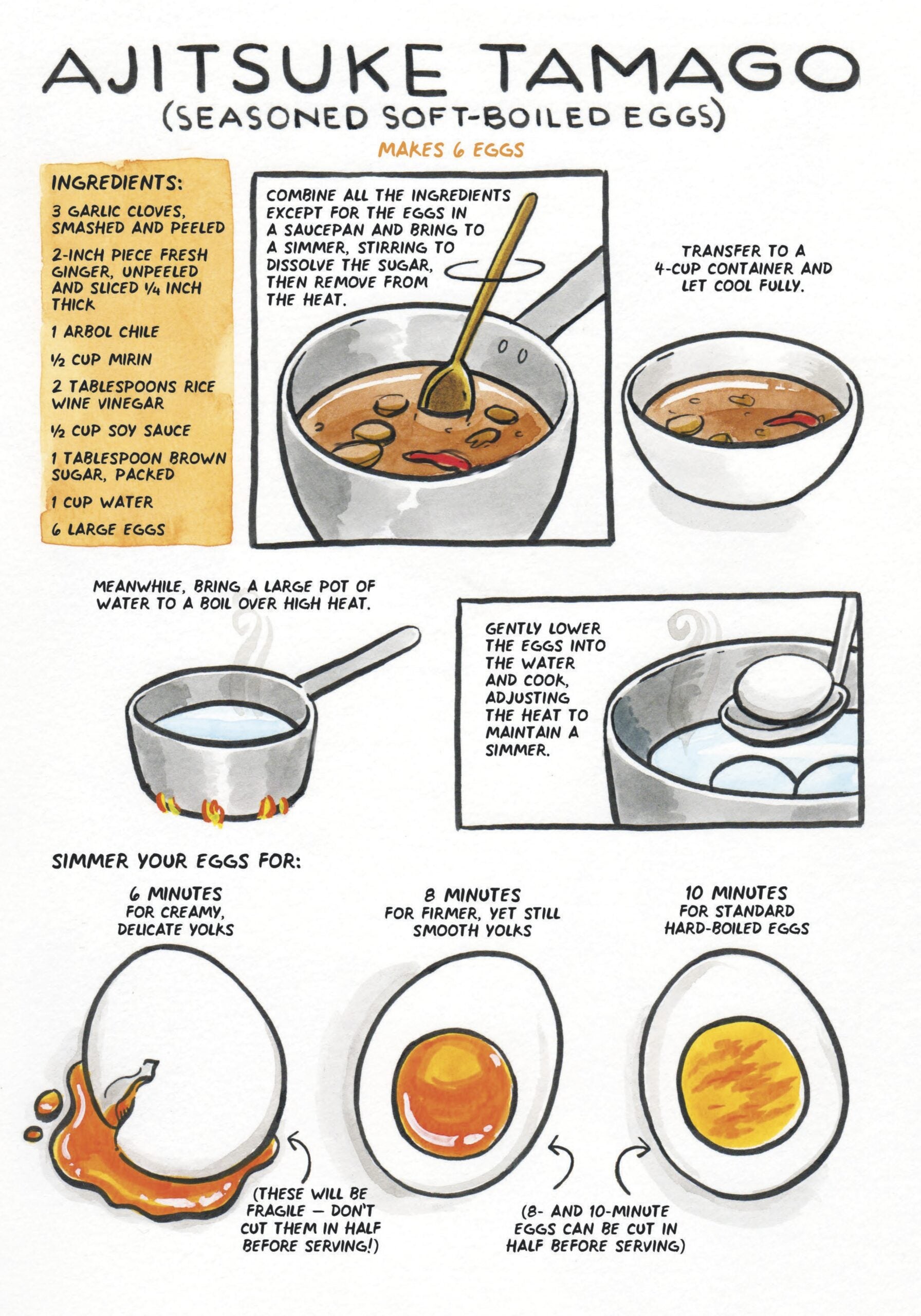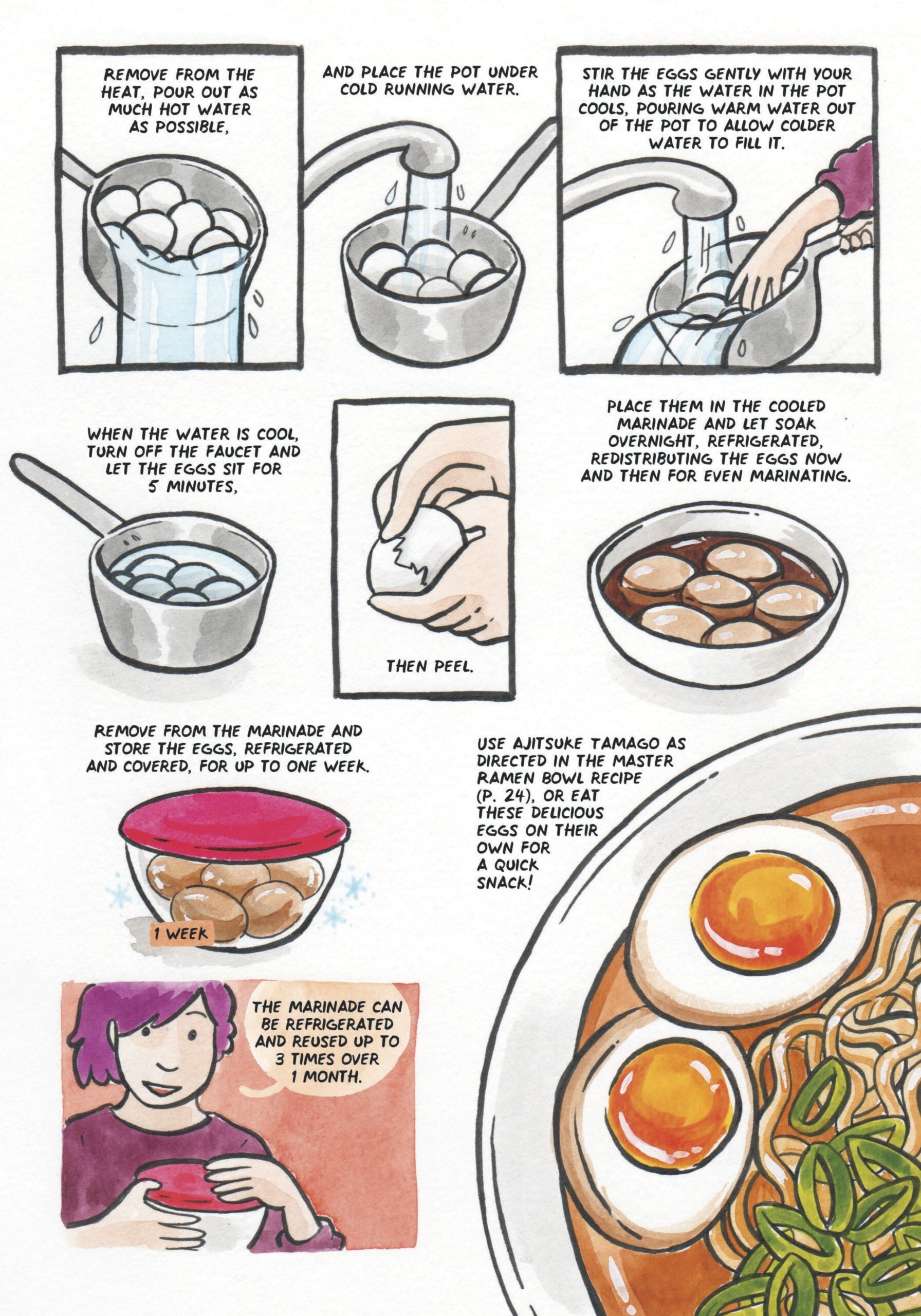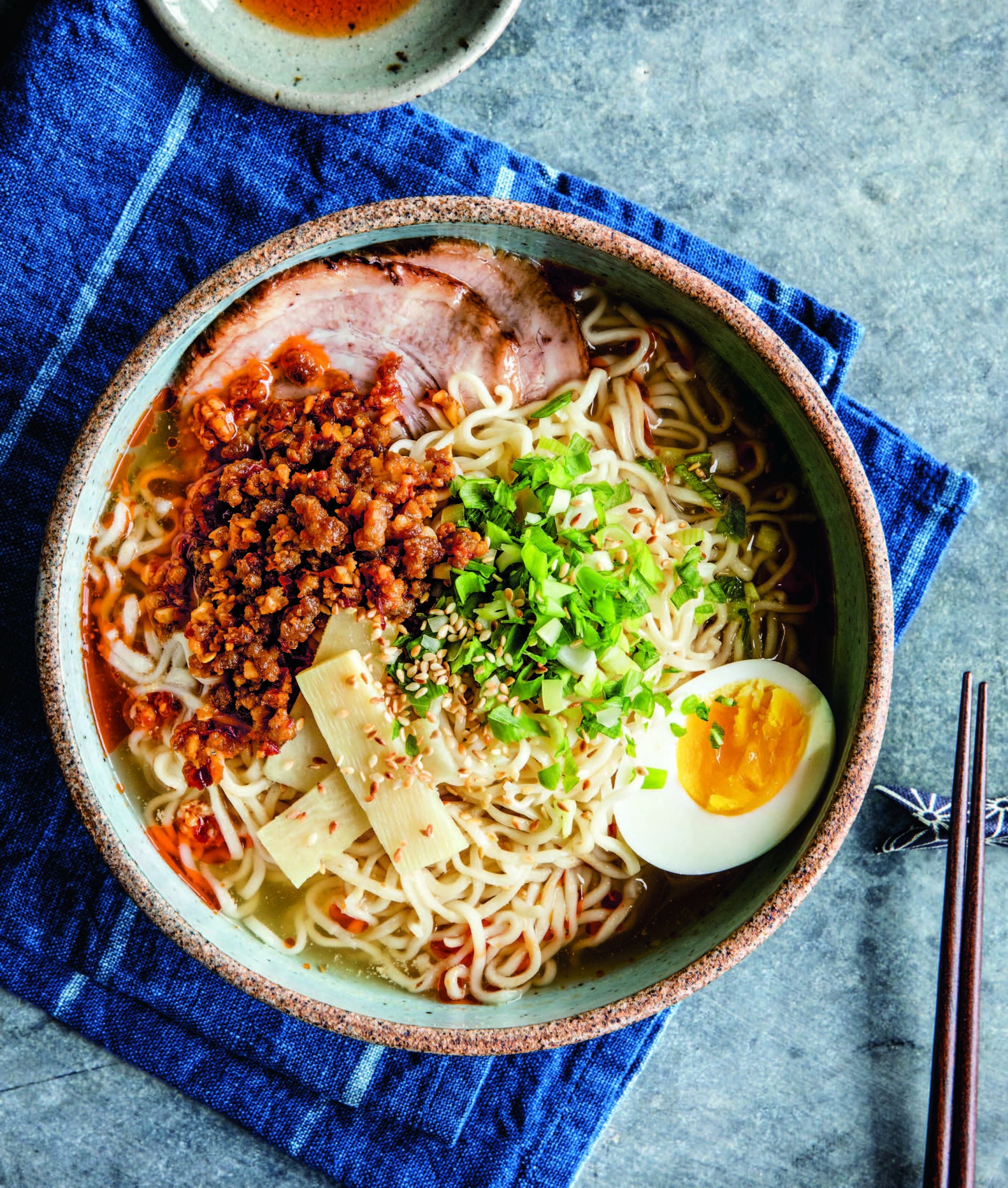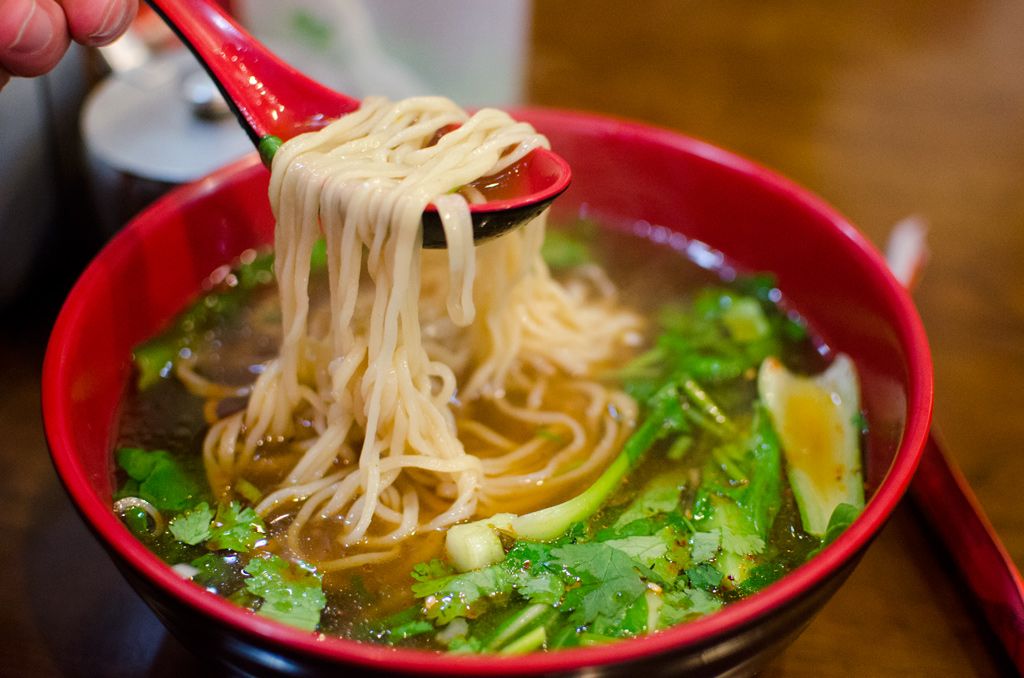The Americanized version of a ramen noodle dish requires boiling hot water, a brick of processed noodles and a packet of seasoning.
Cooking the dish with more of the traditional Japanese flair takes a bit more effort, but the options are endless, says chef and author Hugh Amano, co-author of a recently published comic book cookbook, “Let’s Make Ramen!”
The three-for-a-dollar crinkly packages contain quick meals that are loaded with fat and sodium. But that’s OK, Amano said, because those meals expose people to the dish.
Stay informed on the latest news
Sign up for WPR’s email newsletter.
“The way that we are trying to promote it in the book is just the homemade version,” he said. “The way they do it in the ramen shops in Japan.”


Amano, whose father is from Japan, has spent plenty of time there. He explained ramen evolved from being a quick, working-class food that could be eaten in train stations into creative fare.
“There’s a Japanese word called shokunin and that means just really refining what you do, doing one thing and doing it well,” Amano said. “So, a lot of great new toppings and broth and even noodles have come out of that.”
Before delving into ramen recipes, Amano’s cookbook begins with etiquette on properly eating ramen — slurp it.
The idea behind that, Amano said, is that the noodles and broth can cool down as you’re eating it, because the dish is meant to be eaten quickly.
“As you slurp obviously you’re bringing a lot of air into your mouth as you’re eating and it kind of cools things off and it also really activates the olfactories and gets things going,” he said.
Better Broth
To ensure a full-bodied homemade ramen dish, start with the broth, Amano said. That can be made with ingredients such as chicken bones, or you can venture to something a little bit less familiar, such as kombu. This thick type of seaweed brings a lot of flavor to the finished bowl, he said.
To create more of an “oceanic” flavor, Amano recommended working with katsuobushi, which is dried skipjack tuna that dissolves in the soup, or niboshi, which are small Japanese sardines.
When you’re considering which animal bones to use to flavor your broth, keep in mind that the more cartilege in the bones (in other words, the more joints there are), the more gelatin will be extracted.
“That will utlimately lead to a much rounder, richer…feel,” he said. “Hold back on that if you’re trying to go for a lighter broth.”
Ramen broth also includes tare, or dense flavoring that can be as simple as a half and half mixture of soy sauce and mirin.
[[{“fid”:”1013236″,”view_mode”:”full_width”,”fields”:{“format”:”full_width”,”alignment”:””,”field_image_caption[und][0][value]”:”%3Cp%3E%3Cem%3EPhoto%20courtesy%20of%20%22%3Ca%20href%3D%22https%3A%2F%2Fwww.penguinrandomhouse.com%2Fbooks%2F574550%2Flets-make-ramen-by-hugh-amano-and-sarah-becan%2F9780399581991%2F%22%3ELet’s%20Make%20Ramen%3C%2Fa%3E%2C%22%20by%20Hugh%20Amano%20and%20Sarah%20Becan%3C%2Fem%3E%3C%2Fp%3E%0A”,”field_image_caption[und][0][format]”:”full_html”,”field_file_image_alt_text[und][0][value]”:”Photo courtesy of \”Let’s Make Ramen,\” by Hugh Amano and Sarah Becan”,”field_file_image_title_text[und][0][value]”:”Photo courtesy of \”Let’s Make Ramen,\” by Hugh Amano and Sarah Becan”},”type”:”media”,”field_deltas”:{“4”:{“format”:”full_width”,”alignment”:””,”field_image_caption[und][0][value]”:”%3Cp%3E%3Cem%3EPhoto%20courtesy%20of%20%22%3Ca%20href%3D%22https%3A%2F%2Fwww.penguinrandomhouse.com%2Fbooks%2F574550%2Flets-make-ramen-by-hugh-amano-and-sarah-becan%2F9780399581991%2F%22%3ELet’s%20Make%20Ramen%3C%2Fa%3E%2C%22%20by%20Hugh%20Amano%20and%20Sarah%20Becan%3C%2Fem%3E%3C%2Fp%3E%0A”,”field_image_caption[und][0][format]”:”full_html”,”field_file_image_alt_text[und][0][value]”:”Photo courtesy of \”Let’s Make Ramen,\” by Hugh Amano and Sarah Becan”,”field_file_image_title_text[und][0][value]”:”Photo courtesy of \”Let’s Make Ramen,\” by Hugh Amano and Sarah Becan”}},”link_text”:false,”attributes”:{“alt”:”Photo courtesy of \”Let’s Make Ramen,\” by Hugh Amano and Sarah Becan”,”title”:”Photo courtesy of \”Let’s Make Ramen,\” by Hugh Amano and Sarah Becan”,”class”:”media-element file-full-width”,”data-delta”:”4″}}]]
Heartier Noodles
Amano’s cookbook walks users through how to make their own noodles, but for those not ready for such an adventure, he recommends looking for noodles with some kind of alkalinity.
Look for the words bicarbonate, carbonate or mineral salts on the packaging to ensure you’re getting the right kind. These noodles are stronger and have more of a yellow coloring than other types of noodles.
“Never try to make ramen with just plain noodles or spaghetti or something like that,” he said. “They’ll just disintegrate in that broth.”
Kansui is a substance in the alkaleine noodles that can be found in a liquid or powder form that firms up the noodles by reinforcing the gluten in them. It improves their strength, bounciness and chewiness.
“That’s a very key part to a great bowl of ramen,” he said.
Everything Else
A freestyle option in an otherwise codified cuisine culture, ramen is a standout dish for its versatility.
Basically, you can put anything in it.
One option is ajitsuke tamago, a seasoned ramen egg. Menma, fermented bamboo, is another popular option, Amano said. Some recipes in the cookbook call for pickled shiitake mushrooms, crispy chicken skins and plenty of greens.
Flavored oils, for example sesame oil, sauteed in a wok with scallion, ginger and garlic, can add even more flavor when it’s drizzled on top of the dish.
“I would say just focus on each thing as its own little component,” he said.
Wisconsin Public Radio, © Copyright 2024, Board of Regents of the University of Wisconsin System and Wisconsin Educational Communications Board.


